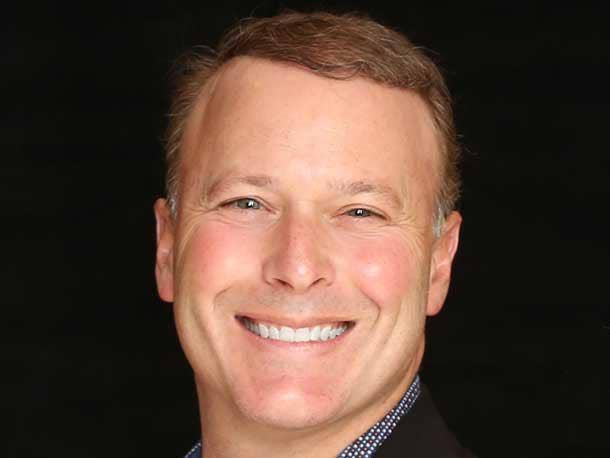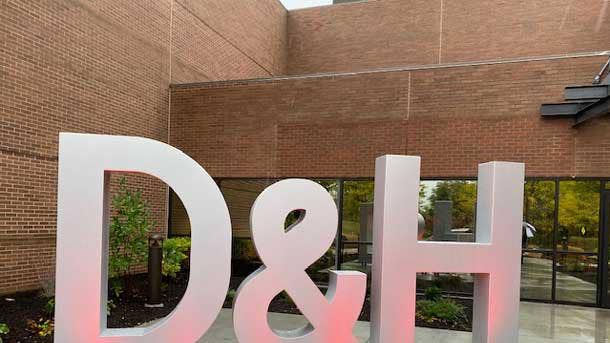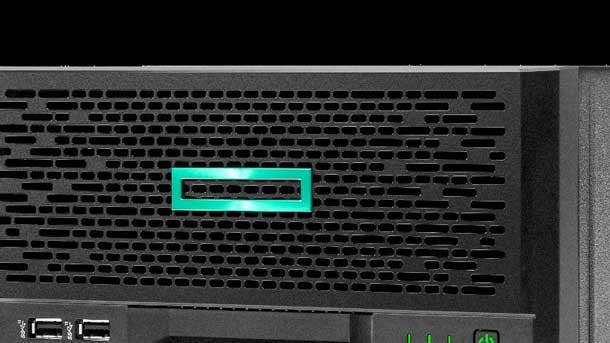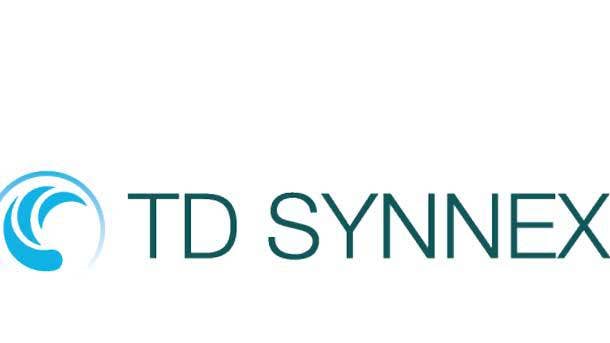D&H’s Dan Schwab: Our X-as-a-Service Tools Offer Partners ‘Incredible Flexibility’
“Our X-as-a-Service tools give incredible flexibility so partners can ‘X’ down a single device. No one else lets them do it for a single device. It also lets them add their own services, and they can pick and choose which of our products they want, which products the end user wants to pay for up front, which products they want to pay for over time as a service,” D&H Co-President Dan Schwab tells CRN.

Still Looking Forward After All These Years
D&H Distributing was founded 105 years ago and has been profitable for its entire existence. It has built itself into a top five IT distributor despite not taking outside investment and not making acquisitions.
And that is just the way Dan Schwab (pictured) and his brother Michael, both of whom are co-presidents, like it.
Harrisburg, Pa.-based D&H, like the rest of the IT industry, went through big changes caused by the COVID-19 pandemic and the subsequent product shortages and extended supply chain issues. However, the distributor was in a unique position thanks to its focus on the SMB market where solution providers spent the past couple of years helping customers go through a massive digital transformation to enable employees to work from anywhere. And, Schwab told CRN, there’s been no taking D&H’s foot off the gas.
“We still see double-digit growth in our future,” he said. “We are actually expecting literally over 25 percent growth in some of those key business areas that grew at 50 percent last year. We don’t see them slowing down. We see modern infrastructure continuing to grow as people are looking to upgrade their back office and create hybrid environments with servers and networking and power.”
Schwab said he sees no end to D&H remaining an independent and growing IT distributor going forward.
“Michael and I and the other owners at D&H, we love what we do,” he said. “We get up every day and we couldn’t be happier with what we do. We don’t need fancy cars or anything. We love having this family business of owners. We love how we win together. When we win, we all share the success.”

How did D&H do in 2021?
We were very fortunate to have another year of stellar growth. I’d say the year was represented by a challenge of supply and demand in many categories. It’s exacerbated by supply chains. I think two years ago, in 2020, it was both supply chain and manufacturing capability issues. In 2021, the manufacturing capabilities in a lot of categories either started to catch up or fully caught up to the demand, but supply chain was a challenge. And D&H luckily continued to have stellar growth, double-digit growth, for last year. And on top of that, there were some categories that become microcosms of how the business world and how our resellers pivoted their business to the new norm.
The new norm really was highlighted when you think about some categories growing at 50 percent growth. D&H has been fortunate. We’ve grown about four times the rate of distribution for about the last eight years on average, and it’s all organic. Growing at 50 percent is a number that we don’t throw around cavalierly, nor is it typical. But I think it speaks volumes to some of the macro trends we see.

What are those macro trends?
The first is security. With the cybersecurity threats, every business, regardless of size, regardless of if there’s an IT budget, when it comes to security, they have to invest. And our resellers have been aggressively looking to deploy those solutions.
I think components, which because of the rising prices of certain components for gaming, for crypto mining, for a lot of different categories, were tremendously hot commodities in 2021.
And [then there is] work from home and learn from home, the whole pro AV and unified communications business. This is video collaboration, outfitting as people started to return to the office and retrofitting conference rooms for a hybrid environment, where in 2020 most everyone was remote. Now you have some people that were in the office and some that were remote. So how do you effectively manage that transition back to the workforce? So those categories really grew over 50 percent.
And then the obvious ones were X-as-a-Service and cloud, which have been growing at triple digits for years. And that continues because end users were migrating their businesses and resellers were reinventing themselves to lead with X-as-a-Service and cloud as well.

Do you see supply chain issues still impacting certain areas?
We do. So in 2021, [there were] some categories in the PC industry [where] we were able to catch up. But there’s still hundreds of millions of dollars of backlogged systems that our partners are waiting for and our manufacturers are working on. So they’re still trying to catch up. And what exacerbates the supply chain issue is the disruption in ports and transportation. We’ve heard of COVID outbreaks in Asia where ports are shut down. We continue to have challenges in receiving goods at our ports and getting them to market. That’s gotten a little bit better. But the biggest is the risk to the supply chain. I think many manufacturers have done a yeoman’s effort in diversifying their supply chains, maybe looking to not have all their production in one facility or one country. And I think that is wise, and that will improve the supply chain long term.
But it’s still somewhat fragile in some respects. We’ve seen cost increases in many categories that had to be passed on. A container from Asia maybe would have cost $3,000 in Q4 two years ago. And in Q4 2021, sometimes it was $20,000. If that container was filled with Motorola phones, obviously there’s a lot of units at high ASPs [average selling prices], it can be cost-effective. But if that container is built with something that is low ASP and big bulk, let’s say microwave ovens or desktop PCs, it is less cost-effective. Notebook PCs, it was still cost-effective because the ASP was high and you could fit a lot of units. For desktop PCs, the cost is more meaningful because the ASPs are lower.

What are some challenges you think distribution is facing in 2022?
I think the challenges in 2022 really revolve around the fact that many partners and many manufacturers have re-evaluated their go-to-market strategies to focus on what they’re best at. So a good example is a lot of our large partners have great configuration capabilities. However, when you have spikes in demand, whether it’s loading systems or configuring systems, whether it’s doing any white-glove type of service, the challenge is when you have that peak, you don’t want to add excess capacity. It’s very expensive to open up a bigger facility or a second facility in another location. So we have a lot of large partners coming up to us today to say, ‘How can you help us handle those peak volumes and those peak times?’
A lot of times, D&H can actually do it more cost-effectively and faster than they’re able to do it. So we’re complementing their efforts. So I think customers and manufacturers are looking at more of a continuum as to who does best within the supply chain. How do we leverage each other’s strengths? Same thing is true with our manufacturers. When they look at the supply chain, how can we speed up getting products to market? How can we help take cost out of the equation? So one of the biggest things we’ve seen is a healthy dialogue between manufacturers and distributors, distributors and resellers, and even resellers and manufacturers sometimes, to triangulate all of our strategies, especially when many of our partners or end users have been waiting for products for many months, to figure out how to make sure we get it there as fast as possible with all the feature sets that those partners are looking for. Whereas I feel we were all in scramble mode in 2020, in 2021 I think we started to refine it. And this is the year—2022—where I think we reap the benefits of those collaborations.

Can you name any particular vendors that really have stepped up to the plate to work with you on that?
We’ve really seen it across the board. One example would be HPE servers. I think they’ve been a great example of figuring out how they can work with us on programs, on projecting out inventory, on prioritizing partners, on training partners, because they were not only focused on how we can help HPE servers, storage and even Aruba networking be successful in the market, but at the same time how to leverage these advanced technologies. How do you drive HPE GreenLake? How do you drive X-as-a-Service or cloud offerings? So this is a case where it’s a technology evolution that we’re working through with our partners, but also a delivery mechanism. How do we drive more BTO [build-to-order] solutions versus CTO [customize-to-order]? CTO is customized. When an end user or reseller can customize it, it may take weeks and weeks for delivery. BTO means we have it in stock and hopefully we have all the options, and so the reseller and end user can get the product within 24 to 48 hours. So that’s a change in supply chains and also a go-to-market strategy change.

Distribution in 2021 saw the acquisition of Ingram Micro by Platinum Equity, and the merger of Tech Data and Synnex into TD Synnex. How are moves by the two biggest players in the industry impacting distribution and specifically D&H?
I think that we’ve never seen events transpire that have created more opportunity for us in my tenure. I’ve been at D&H now 27 years, and Michael, my brother, he’s been here 32 years. And I think it’s because D&H has become one of the three biggest broadline distributors. [Someone from] Wells Fargo once said, ‘When you get bigger, you don’t necessarily get better.’ And I think there’s a lot of truth to that. And I’m not saying that about anyone else, but as we’ve grown, we really look to scale our culture as we scale our business. And what that means is investing in our foundation, investing in our people, our training, and making sure that our service levels every year improve and don’t go backwards, don’t go on hold, but improve. So we embarked on our Built For Growth campaign where I think we’re now over 180 new hires in the sales, technical support and sales support areas to support our partners since May 1 of last year.
So D&H has really leaned in to ensure that, as we prepare for continued double-digit growth, we have the intestinal fortitude to make sure that we have the right people and the right systems to allow us to scale on behalf of our partners. So we spent a lot of time in 2021 interviewing our customers and our vendors about what are they looking for, how can we add a differentiated level of value. And that’s where we’ve leaned in. So we still see tremendous opportunity. I think the training and education and support of partners is more important now than at any point during my tenure because the pace of the adoption of technology and the evolution of business models has never been faster.
So the migration to X-as-a-Service—we built a fantastic tool for that—the migration to cloud services and having hybrid infrastructures, the migration to hybrid workforces, all of those trends have not only obviously accelerated due to the COVID pandemic, but now they’ve become entrenched in our business model. So all of our partners are looking to figure out how they refine and improve their business practices so they can continue to serve their end users. And I think D&H is in a fantastic position because we are small and nimble and creative and responsive. We’re a private company, so we’re not respondent to public shareholders. We’re not respondent to a private equity company that maybe has different agendas long term. Our goal is to be around in 20 years. Every decision we make is for the benefit of our partners, not for the benefit of our share price, but for the benefit of our customers and our vendors. And I think because of that we’re approaching the market slightly differently. And we’re hopeful that we’ll continue to add that differentiated level of service that we’ve been able to deliver.

Your competitors, including Ingram Micro and TD Synnex, are also investing heavily in X-as-a-Service and cloud. Is there a point at which scale matters and impacts D&H?
I don’t believe so. D&H is north of a $5 billion company. And remember, we’re focused on the midmarket and SMB, but we’re not playing in the enterprise. A lot of other companies’ focus is in the enterprise, which is a large portion of their business. So no, I think we’ve hit critical mass. ... I think it’s healthy that everyone is invested there for our partners. I’m hopeful that we all win because then the channel wins. I think from D&H’s vantage point, we’re oftentimes more customer-centric and built from the customer-up versus from our goals-down.
Part of the feedback we hear from partners is that we continue to be the easiest distributor to do business with. We’re adding more salespeople. A lot of other companies are cutting back on the amount of support they have. And with that, the programs and the tools we’re offering—everyone’s got very good tools—but a lot of ours we’ve built in X-as-a-Service, for example. Our X-as-a-Service tools give incredible flexibility so partners can ‘X’ down a single device. No one else lets them do it for a single device. It also lets them add their own services, and they can pick and choose which of our products they want, which products the end user wants to pay for up front, which products they want to pay for over time as a service. And the same thing with their own services. They can lump in their own services as one-time or ongoing fees. So again, based on the feedback from our partners, I think ours is the most customized to their needs.

Not only did Tech Data and Synnex merge, but a lot of big distributors are also buying other distributors overseas. D&H really hasn’t invested in acquisitions, have you?
No. In our tenure, our 105 years of doing business, we’ve built our business fully organically. We look to buy companies. We looked to buy a distributor in Canada, but ultimately we passed because we’re using our own money, our employees’ and our own money at the company. … We’re looking for a fair price because it’s our own money. We’re not playing with the public’/s money. When companies are looking to sell, they’re looking for a premium. And ultimately, we’ve decided that we’re more successful when we do it organically. So we opened up in Canada 14 years ago. We started with two people and rented a warehouse, and lo and behold, 14 years later, it’s a $600 million business with a new general manager and incredibly strong double-digit growth. And I think we’re adding a tremendous amount of value there.
So sometimes it takes a little bit longer, but it’s like the tortoise and the hare. D&H really takes the long approach to our decision-making. So we’ve never acquired another company. I’m not saying we never will, but right now that’s not in our game plan. We are a North American distributor. We are focused on the U.S. and Canada. So I don’t see us looking to acquire or move to other [geographies] primarily because we still see such tremendous double-digit growth for us in North America. And the last thing we want to do is dilute our focus. So we’re going to stay laser-focused.

Has D&H ever been approached by a potential acquirer?
Oh, over the years, many different people have approached D&H, and we just have no interest. People typically look to sell their companies because really one of two reasons. Either they need the capital to run their business, which D&H does not need at all. In fact, we’ve been in business for 105 years. We’ve made money for 105 years. The banks are very comfortable with us. The second point would be if the owners wanted to cash out, and Michael and I and the other owners at D&H love what we do. We get up every day and we couldn’t be happier with what we do. We don’t need fancy cars or anything. We love having this family business of owners. We love how we win together. When we win, we all share the success. So we have no interest in that.
What is the business outlook for 2022 for D&H? What are you expecting in terms of growth or new opportunities?
We still see double-digit growth in our future. We are actually expecting literally over 25 percent growth in some of those key business areas that grew at 50 percent last year. We don’t see them slowing down. We see modern infrastructure continuing to grow as people are looking to upgrade their back office and create hybrid environments with servers and networking and power. So we see that continuing to be top of mind with our partners.
I think 5G becomes a big topic, maybe they’ll be built into your notebooks as we exit the year. What that means for connectivity I think becomes a big topic. I think Wi-Fi 6 also becomes a big topic. I think the luxury of our business is that it’s never standing still. There’s always innovation. Whether it’s processors or graphics, whether it’s mobility, whether it’s design, whether it’s functionality, I think the underlying thread is this migration to a hybrid workforce along with this balance between on-premises and on-cloud. I think that thread is continuing to create opportunities, and then within it, there are subsets of opportunities.